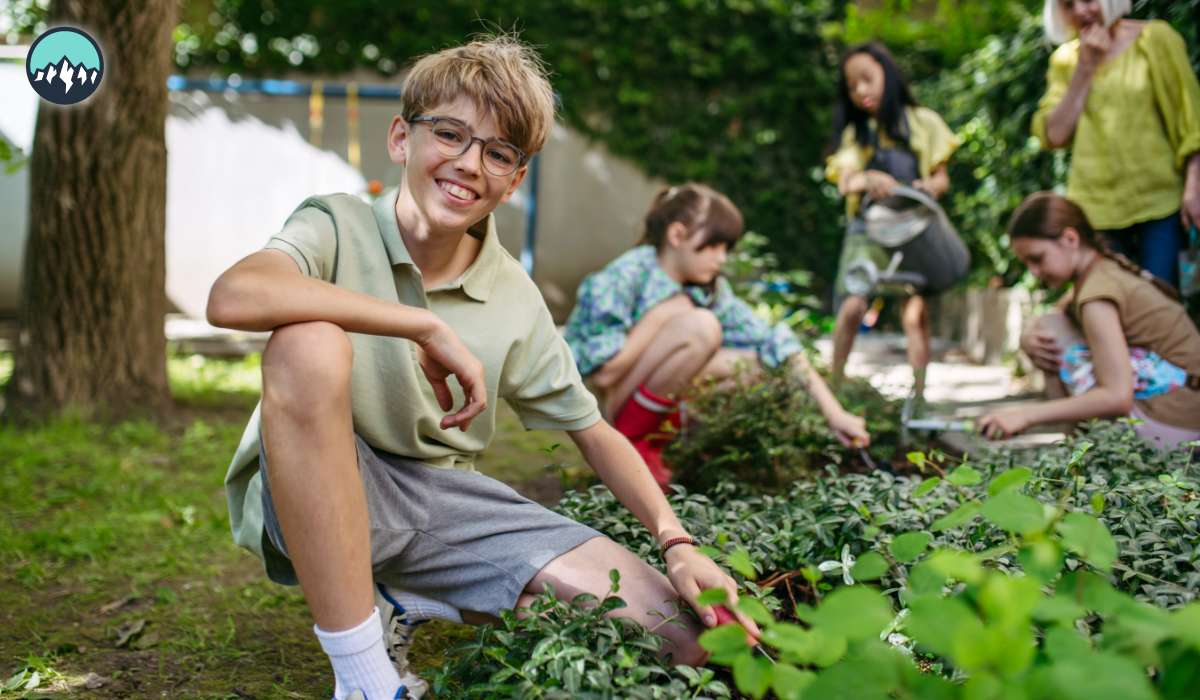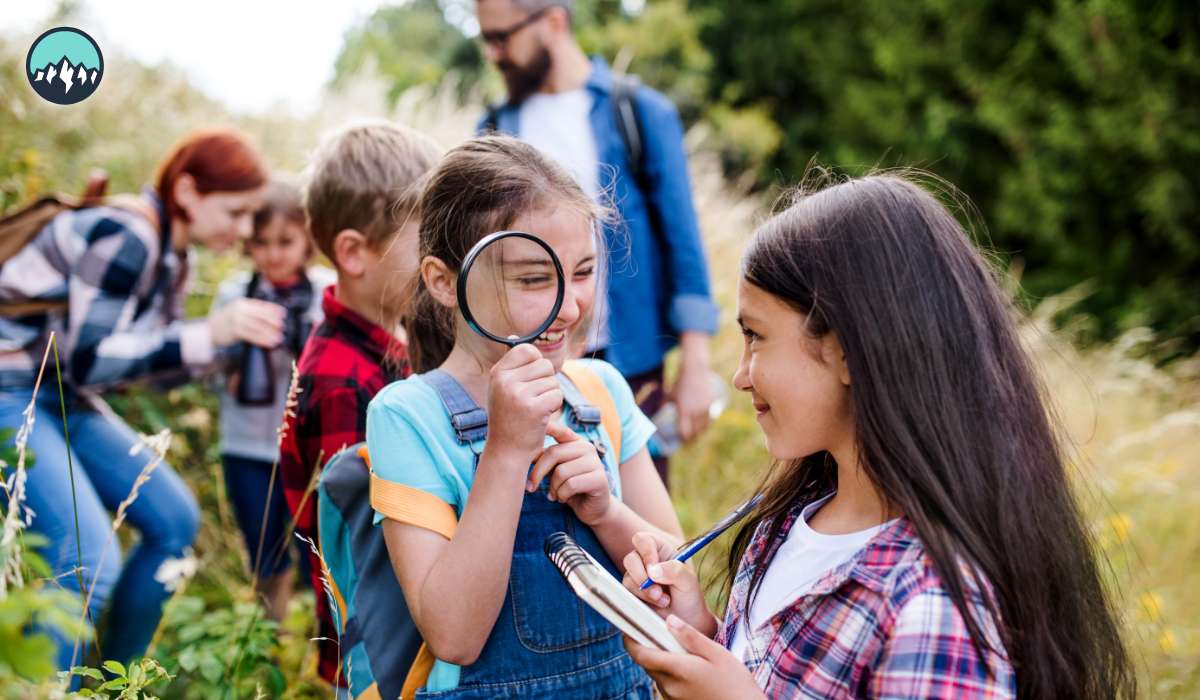Discover the Most Popular Canadian School Field Trips
10 Apr 2025

Canadian school field trips are essential to the country’s educational experience, offering students an exciting opportunity to extend their learning beyond the classroom. These educational excursions expose students to real-world applications of what they learn in school, encourage cultural understanding, and promote curiosity and critical thinking. From natural wonders and museums to cultural and science centers, Canada offers a wealth of engaging destinations that enrich education and make learning more dynamic and memorable.
In this guide, we explore the most popular Canadian school field trips, highlighting destinations by province and theme and providing insights into why these trips are beloved by students, teachers, and parents alike.
Why Field Trips Matter in Canadian Education

Before highlighting Canadian education's most popular field trip destinations, it’s important to understand why field trips are such a valuable educational tool. These reasons include:
Experiential Learning
Research shows experiential learning, where students actively engage with the subject, leads to better knowledge preservation and deeper understanding. Field trips allow students to connect academic concepts to real-world experiences, making learning more engaging and memorable.
Cross-Curricular Opportunities
One of the key strengths of field trips is their cross-curricular potential. A single outing can blend history, science, geography, and art, helping students connect across subjects.
Social Development
These trips also support social-emotional learning, as students collaborate, communicate, and problem-solve in unfamiliar environments, often developing greater independence and confidence.
Cultural Exposure
Cultural exposure is another significant benefit. Students gain a deeper appreciation of Canada's diverse culture by visiting museums, heritage sites, and multicultural institutions.
Career Inspiration
Field trips can also open students’ eyes to potential careers. Visits to science centers, nature parks, or skilled trade organizations can inspire students to explore future job opportunities they may not have previously considered.
As we explore Canada’s most popular field trip destinations, remember that these experiences do more than complement classroom lessons; they help shape well-rounded, curious, and informed learners ready to thrive in an increasingly interconnected world.
What Are the Most Popular Canadian School Field Trips?

Planning a school field trip in Canada can open up a world of exciting learning opportunities for students. Here is a look into some of the most popular and enriching Canadian school field trip destinations across the country.
Royal Ontario Museum (ROM) – Toronto
The Royal Ontario Museum is one of North America's largest and most visited museums. Known for its rich collection of natural history, art, and world cultures, the ROM is a top choice for school trips. Students explore exhibits on dinosaurs, Indigenous cultures, ancient civilizations, biodiversity, and geology. The Educational Focus of the ROM is on Science, history, geography, and Indigenous studies.
Ontario Science Centre – Toronto
The Ontario Science Centre provides an interactive experience for students of all ages. The center fosters curiosity in physics, biology, and astronomy with live demonstrations, hands-on exhibits, and planetarium shows. The Ontario Science Center STEM education, innovation, critical thinking.
Pioneer Villages – Various Locations
Black Creek Pioneer Village and similar heritage sites glimpse 19th-century Canadian life. Students dress in period clothing, churn butter, and learn traditional crafts. The educational focus of Black Creek Pioneer Village is on Canadian history, social studies, and experiential learning.
Science World – Vancouver
Science World at TELUS World of Science is a dome-shaped building with interactive exhibits. Students love the live science shows, robotics displays, and sustainability exhibits. Science World focuses on STEM, environmental education, and hands-on science.
Vancouver Aquarium – Stanley Park
The Vancouver Aquarium is more than just a place to see marine life, it's a center for ocean research and conservation. Its educational programs focus on marine biology, climate change, and conservation. The Vancouver Aquarium focuses its Canadian education on Marine science and environmental studies.
Gulf of Georgia Cannery National Historic Site – Richmond
The Gulf of Georgia Cannery National Historic Site gives students an understanding of Canada’s West Coast fishing industry and the multicultural history of early settlers. The Canadian history, economics, immigration, Indigenous studies.
Montreal Biodome and Planetarium
Located in the Space for Life district, the Montreal Biodome and Planetarium houses ecosystems from across the Americas, while the Planetarium immerses students in astronomical adventures. The Montreal Biome and Planetarium focuses on environmental science, ecosystems, and space exploration.
Old Quebec – Quebec City
Old Quebec is a UNESCO World Heritage site that transports students back to the era of New France. Walking tours include historic landmarks like Château Frontenac and the Citadel. The Old Quebec offers French history, architecture, and education in colonial studies.
Canadian Museum of History – Gatineau
This museum, just across the river from Ottawa, highlights Canadian cultural and social history. Exhibits include Indigenous traditions, early European settlements, and immigration. The Canadian Museum of History focuses on Social studies, multiculturalism, and Indigenous education.
Royal Tyrrell Museum – Drumheller
A dream destination for dinosaur enthusiasts, the Royal Tyrrell Museum features one of the world’s largest displays of dinosaur fossils. Students learn about paleontology through dig pits, fossil labs, and guided tours. The Royal Tyrell Museum offers educational guides on earth sciences, biology, and geology.
Calgary Zoo
Beyond its role as a zoo, the Calgary Zoo is a hub for conservation education. Students engage in workshops on animal adaptations, ecosystems, and endangered species. The Calgary Zoo offers lessons on Biodiversity, Conservation, and Biology.
Fort Edmonton Park
Fort Edmonton Park is a living history museum that showcases Edmonton’s development from the fur trade era to the 20th century. Students interact with costumed interpreters and explore historic buildings. The Educational Focus of Fort Edmonton Park is on Canadian history, economics, and urban development.
The Manitoba Museum – Winnipeg
The Manitoba Museum features a planetarium, science gallery, and historical exhibits focused on the province’s natural and human history. Highlights include the full-size replica of the Nonsuch ship and Indigenous heritage exhibits. The Manitoba Museum offers lessons on local history, science, and indigenous cultures.
FortWhyte Alive – Winnipeg
The FortWhyte Alive nature center promotes environmental awareness and sustainability through outdoor Canadian education programs. Activities include canoeing, birdwatching, and sustainability workshops. The FortWhyte Alive provides education on environmental science, outdoor education, and sustainability.
Maritime Museum of the Atlantic – Halifax
Located on Halifax’s historic waterfront, the Maritime Museum of the Atlantic features exhibits on shipbuilding, the Titanic, and the Halifax Explosion. Interactive displays and model ships make this trip exciting and educational. The museum focuses its education on maritime history, engineering, and local history.
Canadian Museum of Immigration at Pier 21
Known as Canada's Ellis Island, the Canadian Museum of Immigration at Pier 21 shares the stories of immigrants who arrived in Halifax from around the world. Students can explore immigration records and firsthand accounts. The educational focus of the Canadian Museum of Immigration at Pier 21 is Immigration, diversity, and Canadian identity.
Saskatchewan Science Centre – Regina
The Saskatchewan Science Centre brings science to life with interactive exhibits, a climate dome, and IMAX films. Its educational programs align with the Saskatchewan curriculum. The Saskatchewan Science Centre Regina focuses on STEM, energy, and environmental education.
Wanuskewin Heritage Park – Saskatoon
This National Historic Site is dedicated to the culture of the Northern Plains Indigenous peoples. Through hands-on activities, students learn about traditions, languages, and archaeology. The National Historic Site focuses on Indigenous education, history, and cultural studies.
Reversing Falls – Saint John
An awe-inspiring natural phenomenon, the Reversing Falls showcases powerful tidal changes. Guided tours explain the science behind the Bay of Fundy tides and hydroelectric power. The Reversing Falls educates students about the earth sciences, physics, environmental geography.
Kings Landing Historical Settlement
The Kings Landing Historical Settlement is a living history museum that recreates life in 19th-century New Brunswick. Students interact with interpreters, try historical crafts, and explore period buildings. The educational focus of the King’s Landing Historical Settlement is social studies, Canadian history, and experiential learning.
The Rooms – St. John’s
The Rooms in St. John’s is a cultural facility that combines an art gallery, archives, and museum. Its’ exhibits cover Indigenous history, the cod fishery, and Newfoundland’s role in global conflicts. The educational focus of The Rooms is on Art, history, and social studies.
Cape Spear National Historic Site
As the easternmost point in North America, Cape Spear National Historic Site offers breathtaking views and historical context about Newfoundland's role in maritime defense. The Cape Spear National Historic Geography focuses on Canadian heritage and coastal studies.
Tips for Planning a Successful School Field Trip in Canada

Planning a successful school field trip in Canada requires thoughtful preparation and a clear connection to the educational curriculum. Here is a look at how you can plan a successful school field trip in Canada.
- Align with Curriculum: Select field trip destinations that support the subjects and learning goals outlined in the Canadian provincial curriculum. This ensures the experience complements and improves classroom instruction.
- Prepare Students Provide students with background materials, discussion prompts, and learning objectives before the trip. This helps them understand the purpose of the visit and encourages active engagement during the experience.
- Budget Accordingly: Plan for all expenses, including transportation, meals, and entrance fees. Many educational institutions across Canada offer special group rates or school discounts, which can make trips more affordable.
- Involve Parents: Recruit parent volunteers to help supervise and assist with logistics. Their involvement can improve safety and create a stronger community between families and the school.
- Follow Up: Reinforce learning after the trip through reflective assignments like journals, presentations, or creative art projects. These activities help students consolidate their understanding and apply what they’ve learned.
FAQs
What Kind of Safety Measures Are Typically in Place for Canadian School Field Trips?
Safety is a paramount concern for Canadian school field trips, with numerous measures implemented to protect students and staff. These often include thorough risk assessments conducted before the trip to identify potential hazards and develop mitigation strategies. Schools also adhere to strict student-to-supervisor ratios, ensuring adequate adult oversight and establishing clear emergency procedures and communication plans to address unforeseen situations.
What Are Some Unique or Less Traditional Canadian Field Trip Ideas?
Beyond traditional museums and historical sites, unique Canadian school field trips can involve geocaching adventures that combine technology and outdoor exploration. Visiting historical canals or waterways offers a hands-on engineering and transportation history lesson through boat tours and lock demonstrations.
Are Canadian School Field Trips Only For Specific Age Groups?
Canadian school field trips are designed to cater to a wide range of age groups, from elementary to high school. The destinations and activities are carefully chosen and adapted to be age-appropriate and align with the student's developmental stages and learning objectives. This ensures that all students, regardless of grade level, can benefit from engaging and enriching out-of-classroom experiences.




